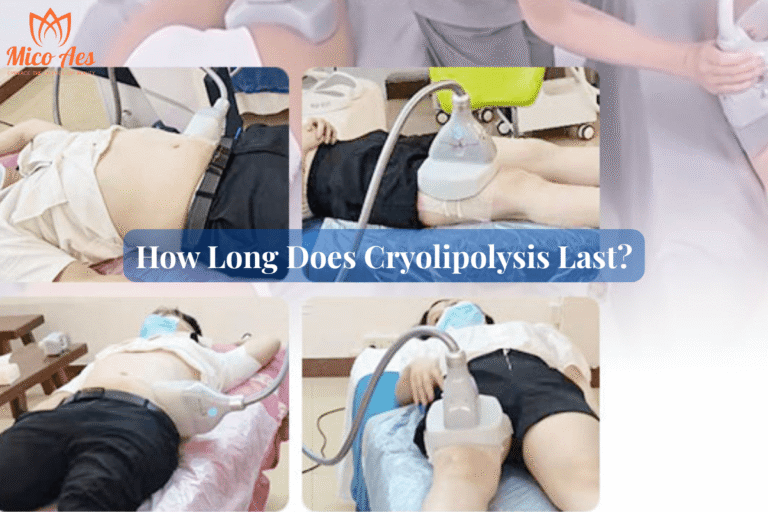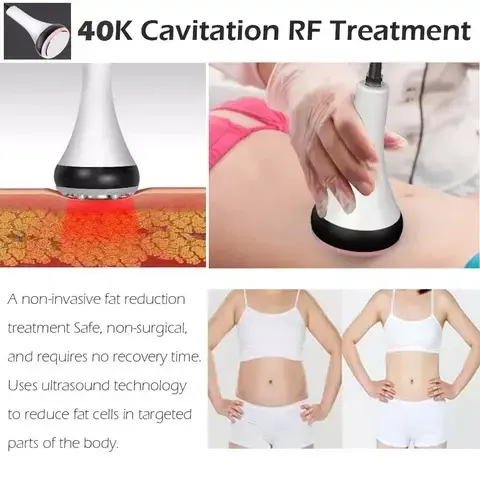Cryolipolysis, also known as fat freezing, is a non-invasive body contouring procedure that selectively reduces localized fat by exposing fat cells to controlled cold temperatures. While widely marketed as safe and effective, how safe is it really?
This guide explores the safety profile of cryolipolysis based on clinical studies, expert reviews, complication rates, and patient feedback, giving you a transparent look at what to expect.
1. What Is Cryolipolysis and How Does It Work?
Cryolipolysis is a non-invasive fat reduction treatment that leverages the higher cold sensitivity of fat cells compared to surrounding tissues like skin and muscle. Here’s how it works:
- Cooling applicator is placed on the target area
- Fat cells crystallize (freeze) under sub-zero temperatures
- Cell apoptosis (natural death) occurs without damaging nearby tissue
- Body metabolizes and eliminates the dead fat cells over 2–3 months
Key Benefits:
- FDA-cleared and CE-certified for use on multiple body areas (abdomen, flanks, thighs, chin)
- No anesthesia or downtime required
- Visible results with as little as one session
2. Clinical Evidence on Safety
✅ Overall Safety Profile:
Multiple large-scale clinical studies (N > 3,000) confirm cryolipolysis is safe when performed properly:
- No systemic complications like organ damage or severe infections
- No impact on cholesterol, triglycerides, or liver function
- Short recovery time and well-tolerated by most patients
Regulatory Approvals:
- FDA Approved for non-surgical fat reduction
- CE Certified in Europe for aesthetic use
Patient Satisfaction:
- 73%–86% reported satisfaction
- 82% would recommend the treatment
3. Common Side Effects: Mild and Temporary
Most side effects are localized, transient, and resolve within 2–4 weeks.
| Symptom | Frequency (%) | Description |
|---|---|---|
| Redness (Erythema) | 44.5% | Skin flush at treatment site |
| Swelling (Edema) | 30.5% | Mild swelling that fades naturally |
| Bruising | 25% | Minor and superficial |
| Temporary Numbness | 49.5% | Can last for 1–3 weeks |
| Tingling / Soreness | 28.8% | Often resolves within days |
| Itching / Sensitivity | <15% | May occur as nerves recover |
Relief Tips:
- Apply cold compress
- Avoid intense exercise for 48 hours
- Stay hydrated to speed up fat metabolism
4. Rare but Notable Complications (<0.1%)
Though rare, patients must be informed of potential serious events:
🔴 1. Paradoxical Adipose Hyperplasia (PAH)
- What is it? Treated area enlarges rather than reduces
- When? Typically appears 3–6 months post-treatment
- Risk rate: ~0.0051% (1 in 19,600 cases)
- More common in: Men and abdominal treatments
- Treatment: Liposuction or surgical correction required
🔴 2. Skin Damage
- Blistering / Ulceration: Rare, usually linked to very thin skin or pre-existing dermatologic conditions (eczema, psoriasis)
- Prevention: Careful screening and temperature calibration
🔴 3. Delayed Nerve Pain
- Occurs in ~0.1% of patients
- Symptoms: Burning, tingling, cramping
- Duration: Usually self-resolving within 2 weeks
5. Absolute Contraindications (Who Should NOT Get Cryolipolysis)
Cryolipolysis is not suitable for individuals with:
| Condition | Reason |
|---|---|
| Cold-related diseases | e.g., Cold agglutinin disease, Raynaud’s syndrome, Cryoglobulinemia |
| Implanted medical devices | e.g., Pacemakers may be temperature-sensitive |
| Skin wounds / infections | Local infections can worsen with cold exposure |
| Severe systemic conditions | Uncontrolled diabetes, liver/kidney failure, bleeding disorders |
| Pregnancy / Breastfeeding | Not enough data on safety |
| Severe obesity (BMI >30) | Treatment is for contouring, not weight loss |
6. Factors That Influence Treatment Safety
| Factor | Impact on Safety |
|---|---|
| Device Quality | Only FDA/CE-certified devices (e.g., CoolSculpting®, Cristal™) should be used |
| Operator Skill | Experienced practitioners reduce risks of skin burns or frostbite |
| Proper Patient Screening | Ensures safe outcomes and sets realistic expectations |
| Treatment Protocols | Avoid blocking air inlets or applying too low temperatures |
7. Long-Term Safety & Effectiveness
- Short-term safety: Well-documented with thousands of cases
- Medium-term (3–6 months): No evidence of metabolic burden or fat redistribution
- Long-term (>5 years): Still under investigation, but no current signs of organ accumulation of fat cell debris
Summary: Is Cryolipolysis Safe?
| Aspect | Assessment |
|---|---|
| General Safety | ✅ High – Non-invasive, well-tolerated |
| Side Effects | 🔶 Mild & temporary (numbness, bruising) |
| Rare Complications | 🔴 PAH, nerve pain, frostbite – extremely rare |
| Risk Mitigation | ✅ Proper screening, certified devices, skilled providers |
| Best Candidates | ✅ Localized fat, BMI <30, good skin elasticity |
Safety Guidelines for Optimal Results
| Stage | Key Safety Measures |
|---|---|
| Pre-Treatment | Screen for contraindications; obtain informed consent (disclose PAH risk) |
| During Treatment | Use certified devices; avoid extreme cold or long durations |
| Post-Treatment | Encourage hydration, cold compresses, schedule follow-up within 3 months |
✅ Conclusion:
Cryolipolysis is a clinically safe and effective non-surgical fat reduction method when performed under proper medical supervision. While minor side effects are common, serious complications are extremely rare and preventable. Clear communication, thorough patient assessment, and adherence to safety protocols are key to achieving optimal, safe results.






